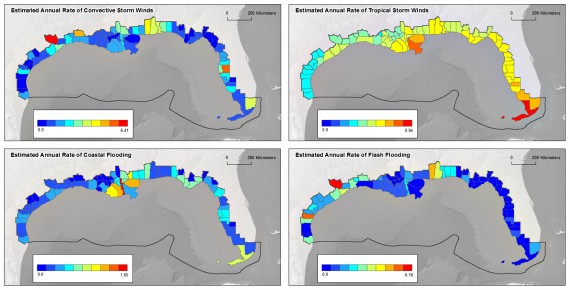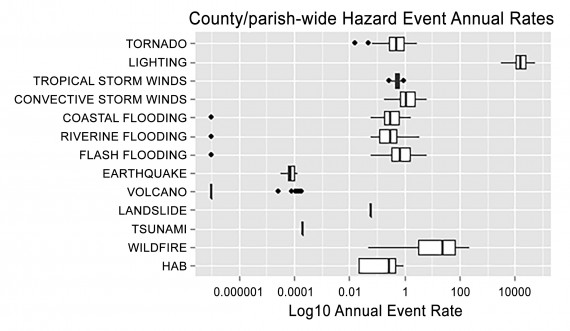Goal: Improve Coastal Preparedness, Response, Recovery, and Resiliency to All-Hazards in the Gulf of Mexico
Methods and Products: RPI adopted an innovative quantitative framework to evaluate risk. Explicit quantitative probabilities of hazard event occurrence and metrics quantifying population and human-built and environmental assets were computed from a wide variety of data sources using actuarial statistics and spatial analyses. These were used together with quantitative assessments of specific vulnerability of each asset type to generate final risk indices.
RPI evaluated hazard probability for 22 different specific hazard types:
- Tropical and convective storm winds
- Tornadoes,
- Lightning
- Riverine, coastal, and flash flooding
- Earthquakes
- Landslide
- Volcanoes and tsunamis
- Harmful algal blooms
- Oil and chemical spills from pipelines, vessels, vehicles, rail, and facilities
- Radiological and biological releases from facilities, reactors, and vehicles
A centerpiece of the project was a detailed quantitative analysis of tropical and convective storm wind hazards, and coastal, storm-surge, riverine, and flash flooding hazards via NOAA NCDC HURDAT, Storm Events Database and Severe Weather Data Inventory as well as FEMA DFIRM and Q3 data.


